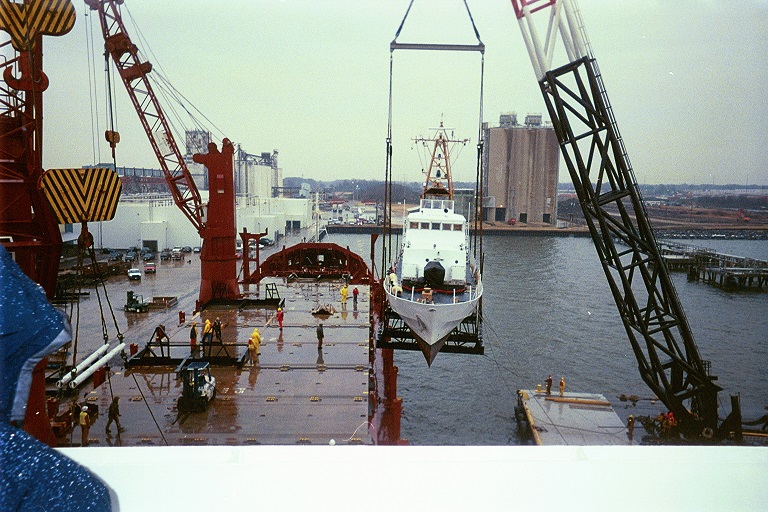 Naval operations supporting Operation Iraqi Freedom (OIF) began with the U.S. Navy in the summer of 2002. The Navy drew on its plans for combat operations in Iraq and in September, U.S. Naval Forces Central Command (NAVCENT) requested U.S. Coast Guard support for combat operations.
Naval operations supporting Operation Iraqi Freedom (OIF) began with the U.S. Navy in the summer of 2002. The Navy drew on its plans for combat operations in Iraq and in September, U.S. Naval Forces Central Command (NAVCENT) requested U.S. Coast Guard support for combat operations.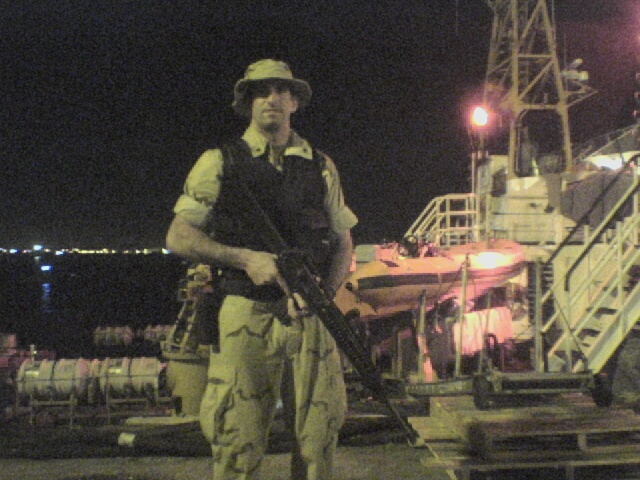
Preparations for Coast Guard deployment moved quickly. In October, the service’s Atlantic Area Command (LANTAREA), headquartered in Portsmouth, Virginia, created a deployable detachment to oversee personnel, supply and maintenance needs for patrol boat operations in the Persian Gulf. It designated this shore detachment Patrol Forces, Southwest Asia (PATFORSWA). LANTAREA assigned Lt. Cmdr. John McKinley as the commanding officer for PATFORSWA and, based on their maintenance records, selected the four 110-foot “Island”-Class patrol boats: Cutters Adak, Aquidneck, Baranof, and Wrangell.
To prepare PATFORSWA members for deployment, LANTAREA built the PATFORSWA staff around a core group of the 17-member crew from the 110-foot Cutter Sapelo. LANTAREA drew from over 20 subsidiary commands to assemble a PATFORSWA staff numbering over 50 members. This shore-side support staff would also include engineers from the Mobile Support Unit (MSU), a reserve unit organized to support the patrol boats.
By November, McKinley led an advance team to the Persian Gulf to determine the support facilities available in the host country. The Navy’s forces were located at the port city of Manama, Bahrain, mainly at Naval Support Activity (NSA) Bahrain requiring PATFORSWA staff to locate their base of operations in that area. NSA Bahrain held a variety of Navy posts necessary to PATFORSWA operations, including NAVCENT, the U.S. Fifth Fleet, and Destroyer Squadron 50 (DESRON 50), the operational command for Coast Guard cutters forces.
In early 2003, an advanc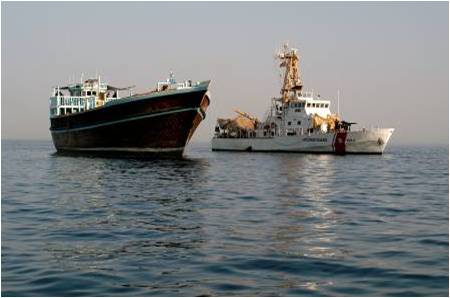 e team arrived in Bahrain to set-up PATFORSWA. On Jan. 15, McKinley touched down while executive officer, Lt. Greg Magee, and rest of the staff members arrived within a week. McKinley met with the staff of Task Force 55 and DESRON 50 with which the cutters would operate. PATFORSWA’s command staff arranged for housing, transportation, communications, computer connectivity, workspace, and all other support functions. They would face plenty of challenges with summertime temperatures averaging well over 100 degrees Fahrenheit and periodic sandstorms that deposited brown grit on all exposed surfaces.
e team arrived in Bahrain to set-up PATFORSWA. On Jan. 15, McKinley touched down while executive officer, Lt. Greg Magee, and rest of the staff members arrived within a week. McKinley met with the staff of Task Force 55 and DESRON 50 with which the cutters would operate. PATFORSWA’s command staff arranged for housing, transportation, communications, computer connectivity, workspace, and all other support functions. They would face plenty of challenges with summertime temperatures averaging well over 100 degrees Fahrenheit and periodic sandstorms that deposited brown grit on all exposed surfaces.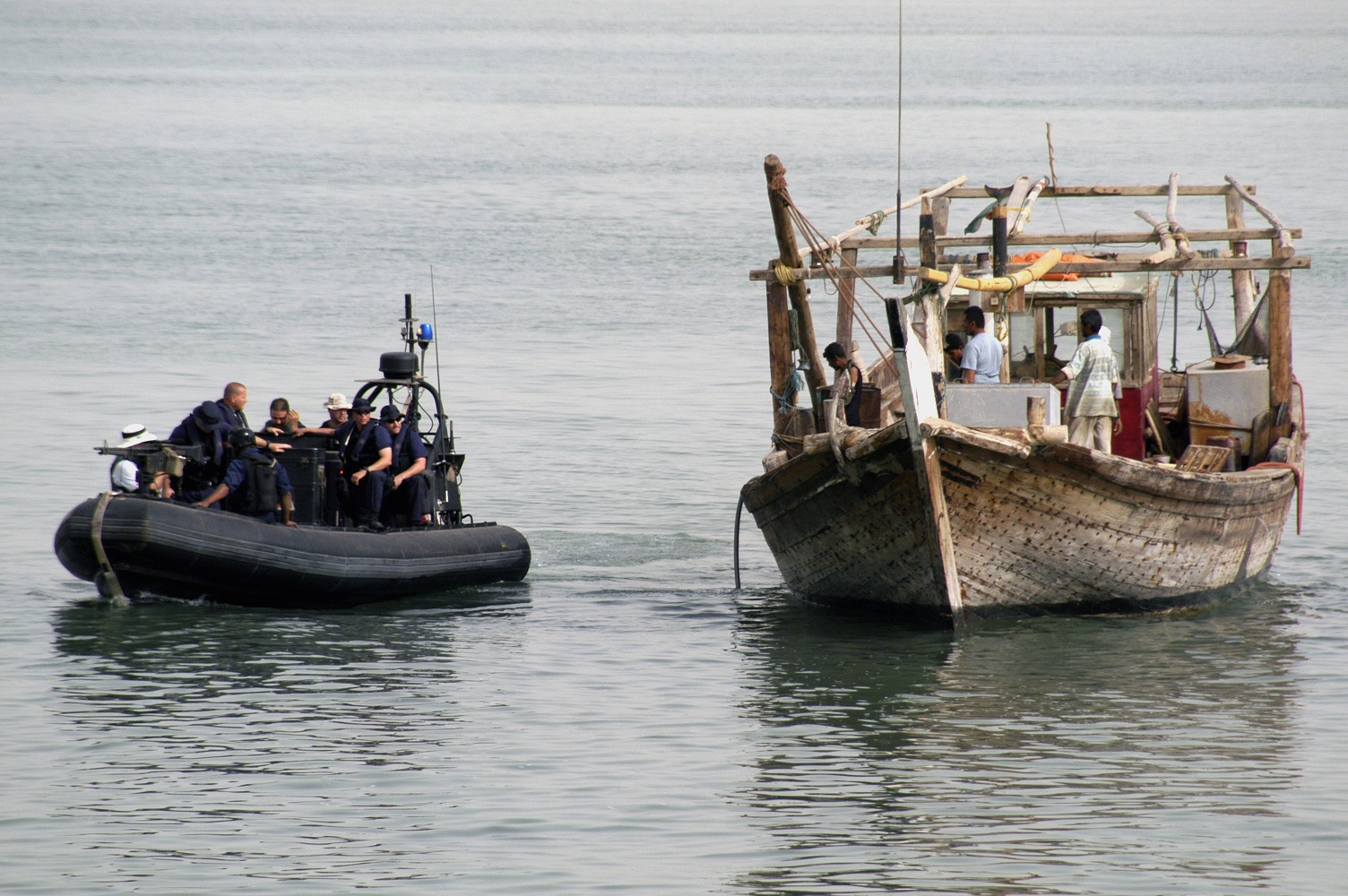
To support operations, the PATFORSWA staff arranged housing and a base of operations. The advance team leased a compound that had housed a Coast Guard Port Security Unit a year earlier. The support crew also modified the compound to house all its personnel in case of heightened security requirements. PATFORSWA members also equipped the compound with berthing, a lounge area, parking for its trailers, offices for each department, sandbags for force protection and camouflage netting to provide shade from the sun. Equipment housed on base included eight MSU trailers, small arms, a portable armory, a spare cutter engine and chemical, biological and radiation (CBR) detection and decontamination equipment. PATFORSWA’s patrol cutters would dock at a pier located at the Mina Salman port facility, a 10-minute drive from the compound.
By the end of February 2003, most PATFORSWA staff members participating in OIF had arrived in Bahrain. The main body touched down on Feb. 26, including four patrol boat crews; four law enforcement detachment (LEDET) members assigned to each cutter; and the main contingent of support staff for PATFORSWA’s Bahrain base. The MSU Baltimore members also arrived after shipping their support trailers full of parts, tools, and equipment.
As PATFORSWA stood-up operations, the detachment’s mission conformed to realities on the ground. The crew from Sapelo, originally intended to serve as a relief for members aboard deployed cutters, were not needed in that role. McKinley became a fulltime liai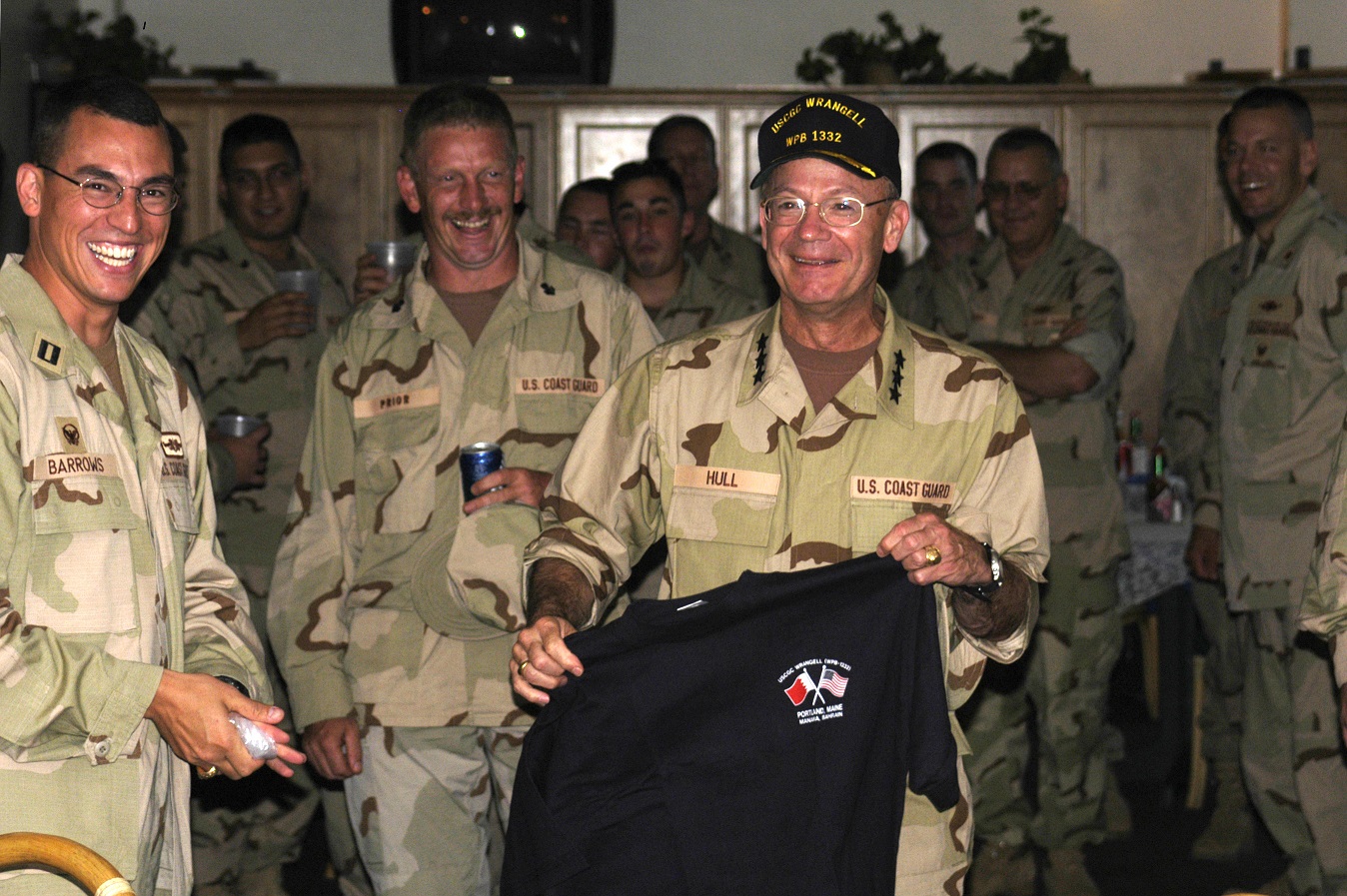 son officer to DESRON 50, and Magee became assistant operations officer for DESRON 50 in addition to their duties as PATFORSWA’s commander and executive officer. The Navy tasked PATFORSWA with supporting two Navy 170-foot Cyclone-Class patrol craft due to their similarity to Coast Guard patrol boats. In addition, PATFORSWA began 24-hour force protection at its compound. U.S. naval forces could only occupy a 400-meter stretch of their pier’s 900-meter length, so vessel shifting also became a regular task for the patrol boat crews.
son officer to DESRON 50, and Magee became assistant operations officer for DESRON 50 in addition to their duties as PATFORSWA’s commander and executive officer. The Navy tasked PATFORSWA with supporting two Navy 170-foot Cyclone-Class patrol craft due to their similarity to Coast Guard patrol boats. In addition, PATFORSWA began 24-hour force protection at its compound. U.S. naval forces could only occupy a 400-meter stretch of their pier’s 900-meter length, so vessel shifting also became a regular task for the patrol boat crews.
After the patrol boats arrived, the work tempo accelerated. The 110s appeared in Bahrain having ridden Motor Vessel Industrial Challenger for about 35 days from Portsmouth, Virginia. On March 5, a heavy-lift crane off-loaded the cutters taking only six hours to set them in the water. The cutter crews conducted sea trials for two days, stowed stores on board the patrol boats on March 8. On March 9, Adak and Aquidneck deployed to the Northern Persian Gulf with Cutters Baranof and Wrangell following on March 12. Operation Iraqi Freedom combat operations commenced on March 19, and PATFORSWA’s cutters served as the Coalition’s workhorses in boarding, escort, and force protection duties. PATFORSWA’s units proved so successful that Cutters Monomoy and Maui joined the flotilla in May 2004 bringing the number of 110s in the Persian Gulf to six.
PATFORSWA is the Coast Guard’s largest unit outside the United States comprising six patrol boat crews, a relief crew for key personnel, and shore-side support units. In 2010, a 12-member Maritime Engagement Team (MET) joined PATFORSWA. It conducts law enforcement training for vessel and shore-side personnel associated with partner nations in the region and Coalition-nation vessels. PATFORSWA also supports the Advanced Interdiction Team, a 12-person detachment comprised of members from Coast Guard Maritime Security Response Team (MSRT). In addition, PATFORSWA operates a forward base at the Kuwait Naval Base, providing support and assistance when cutters arrive there.
Today, PATFORSWA supports Operation Enduring Freedom and Inherent Resolve, provides maritime humanitarian presence on the seas, supports the Navy’s Fifth Fleet, and forms strong ties with partner nations throughout the Arabian Gulf region.
Editor’s note: The Coast Guard’s six 110-foot patrol boats were decommissioned and replaced with six 154-foot fast response cutters, with the final two joining in August 2022.
In the News: